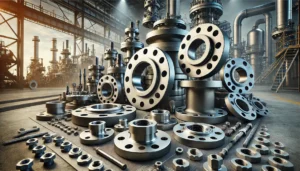In industrial applications, achieving efficient sealing is crucial for maintaining operational integrity, preventing contamination, and ensuring safety. Rubber profiles have emerged as essential components in enhancing sealing efficiency across various industries. Their adaptability, durability, and superior sealing properties make them indispensable in numerous applications.
Interpretation of Rubber Profiles
Rubber profiles are defined as extruded or molded pieces that are used to seal gaps, joints, and other interfaces in components. They come in different shapes and sizes that are adjusting toes, and are widely applied in areas to stop the ingress of contaminants such as dust, water, air, etc. Materials like EPDM, silicone, nitrile, and neoprene are popular because they are very resistant to environmental and chemical reactions.
Enhanced Sealing Efficiency
- Custom Designed Profiles: Rubber profiles are today designed and manufactured according to the established complicated contours and technical requirements. This guarantees a proper fit and sealing which reduces the chances of potential leak paths. Lip seal profiles can indeed be considered to possess a more superior sealing performance over a wider range of environments by effectively retaining the lubricants while preventing the dirt and other debris from entering the machinery.
- Material Selection: The choice of rubber material can have a huge impact on the performance of the seal. EPDM is generally called the material of choice because it has excellent weathering, UV and ozone aging resistance which makes it suitable for outdoor usage. Silicone has wider temperature application and is preferred for extreme temperature uses. Nitrile is suitable for automotive and aerospace applications as it provides good resistance to oils and fuels. By choosing the right material, the serviceability of the seal is ensured while the sealing effect can be preserved in a particular operational environment.
- Compression Set Resistance: Achieving optimum sealing effectiveness requires that a shape memory effect exists in the material used for seals. Rubber profiles with low compression set resistance suffer from excessive leakage due to ineffective sealing forces over time when the material suffers deformation. This property enables seals to undergo steady or repetitive loading without failing over time.
- Ease of Installation: There are different rubber profiles that can be easily fitted without using any tools. For instance, edge protection profiles are fitted onto panel edges where sealing is required to ensure a non movement joint while enabling protection against wear and tear. They are easy to install, which increases productivity by reducing installation time and associated costs.
- Resistance to Environmental Factors: Different manufacturing firms operate in extreme environmental conditions such as UV radiation, extreme temperatures, and chemicals. Therefore, rubber profiles have to be developed to last through these environmental factors while providing long-term sealing. For example, EPDM rubber profiles are able to resist high weathering and even ozone which makes it ideal for outdoor, and automotive applications.
- Vibration Dampening: Rubber profiles do not only serve the purpose of sealing machinery but also act as a noise dampener which adds to the durability of the machinery components themselves. This adds to the overall operational efficiency of the machinery.
- Compliance with Standards: Reliable and safe products are needed in all industries, and quality rubber profiles are manufactured for this purpose. For instance, the sealing profiles used in railway and fire protection applications have specific safety standards that must be adhered to. These profiles perform properly in critical conditions because of the sealing profiles standards.
Applications Across Industries
- Automotive Industry: The use of rubber profiles in vehicles range from doors to windows and trunks. Rubber profiles prevent air and water from entering, hence reducing noise and adding to passenger comfort. In addition to this, they act as barriers against dust and debris which improves the durability of the vehicle components.
- Construction Industry: Rubber seals are used in the construction of buildings to seal gaps in windows, doors, and facades. This setting serves for thermal insulation and water blocking. When the rubber seal is in place, the opening expands and contracts because of building thermodynamic or settling movements while still capable of fluid retention.
- Aerospace Industry: Those used in the aviation industry should endure harsh temperature and pressure conditions. They take the shape of rubber seals that are used to block aircraft openings such as doors, windows, and fuel systems during operation to guarantee safety and efficiency.
- Marine Industry: Such rubber seals fit onto hatches, windows, and doors in marine vessels to shield the interior from seawater while also guarding against corrosion brought on by saltwater. Polymers such as neoprene are preferred because they exhibit better resistance to saltwater and UV radiation.
- HVAC Systems: The system employs rubber profiled seals to block the airflow in HVAC ducts and components, enhancing energy usage. Proper seals minimize airflow through the ductwork, which enhances energy efficiency and improves indoor air quality.
Advancements on Rubber Profile Technology
The technological progress aided by advances in materials science includes new rubber profiles with superior characteristics. Today’s high-tech sealing materials exhibit remarkable properties such as high strength, pressure-tightness in the absence of mechanical support, and liquid chemical corrosion resistance. These new features ensure the development of more reliable sealing technology in increasingly complex industrial conditions.
Conclusion
The customizable rubber profiles have proven to be essential for sealing in industries by being easy to customize and requiring low maintenance. As material technology progresses, manufacturers are making more robust rubber gaskets which are extremely beneficial. These high performance rubber gaskets would vastly improve the seal in machinery which is utilized more and more. These advancements mean that rubber gaskets have become essential in many industries.










